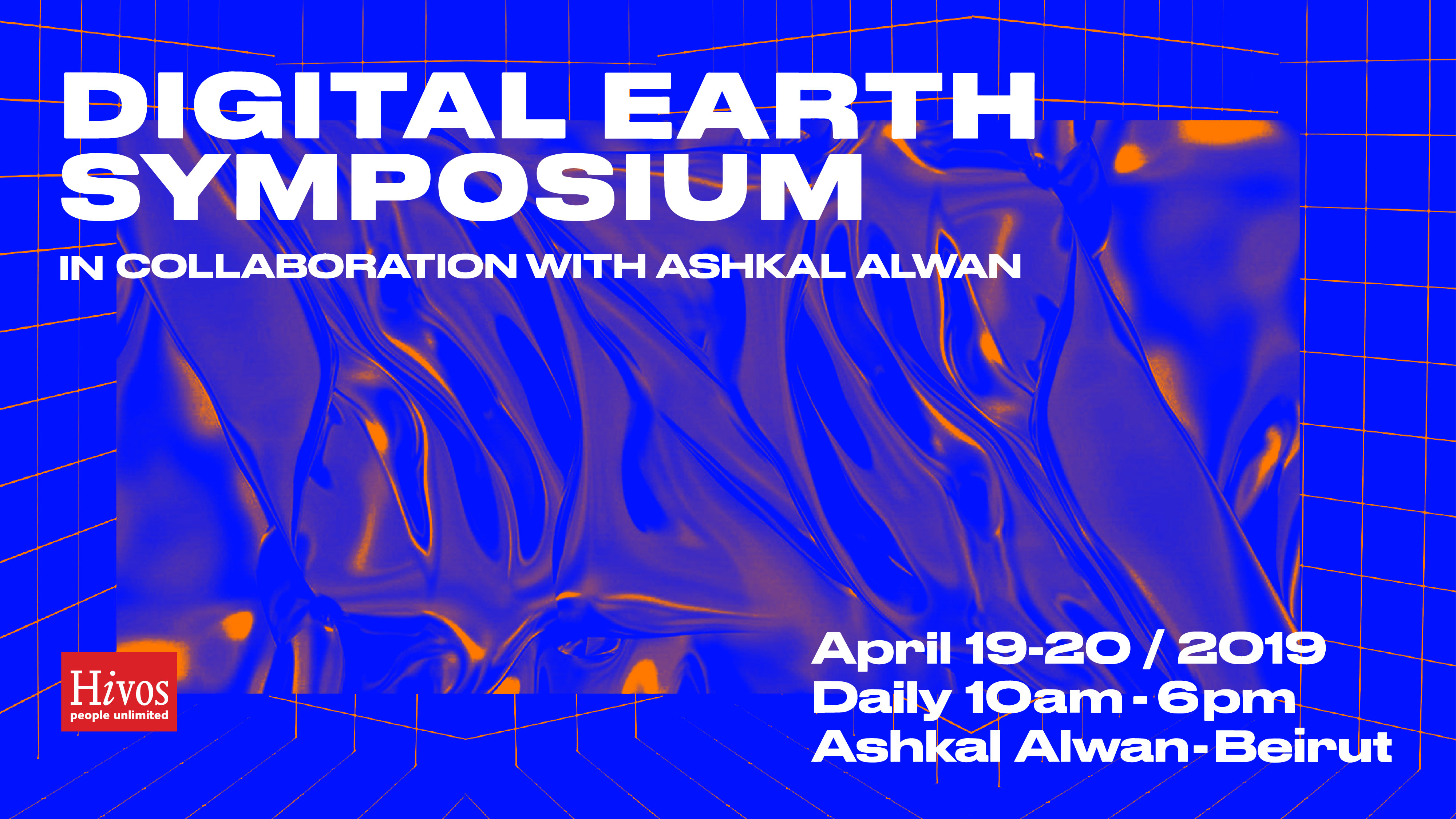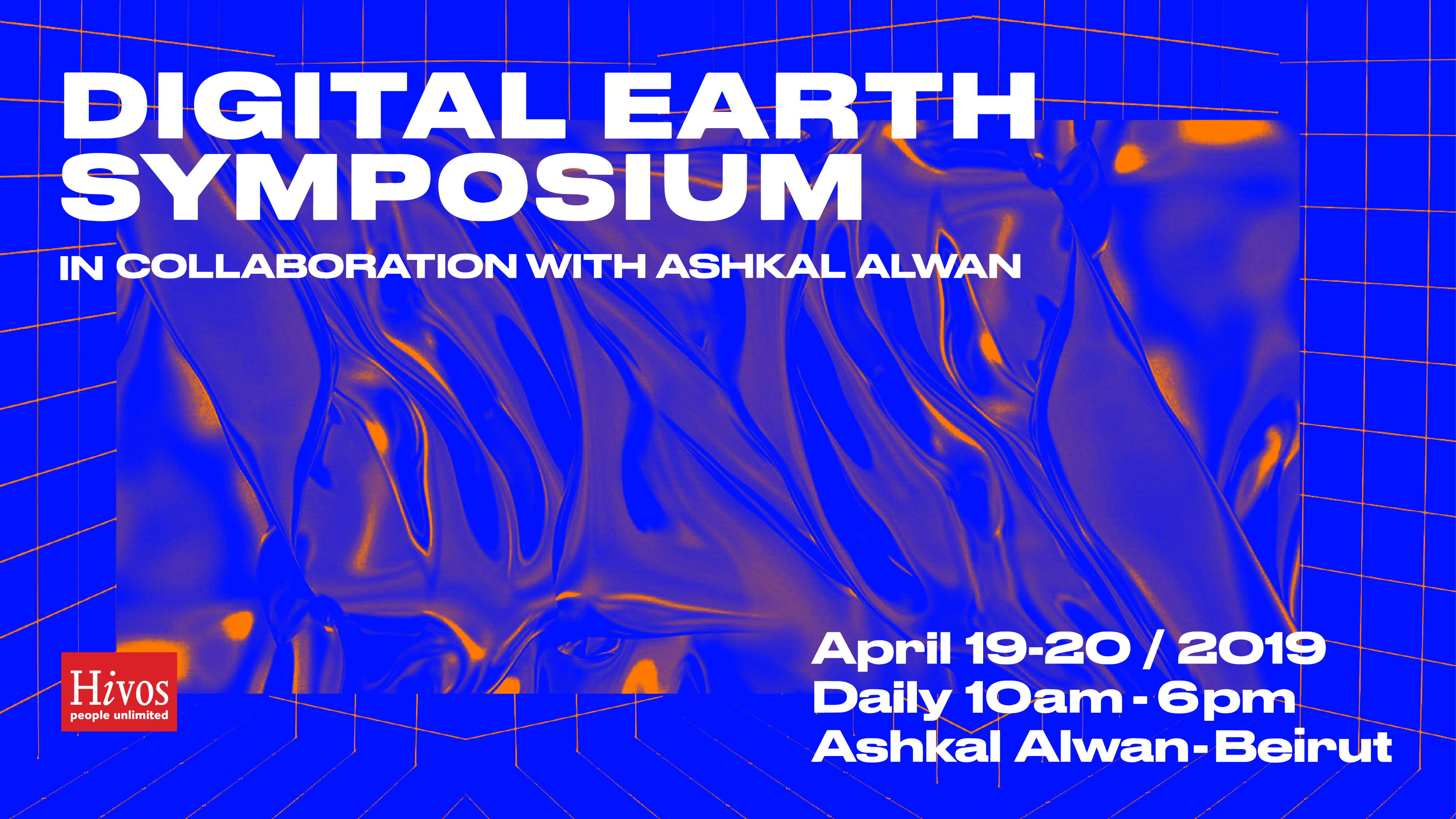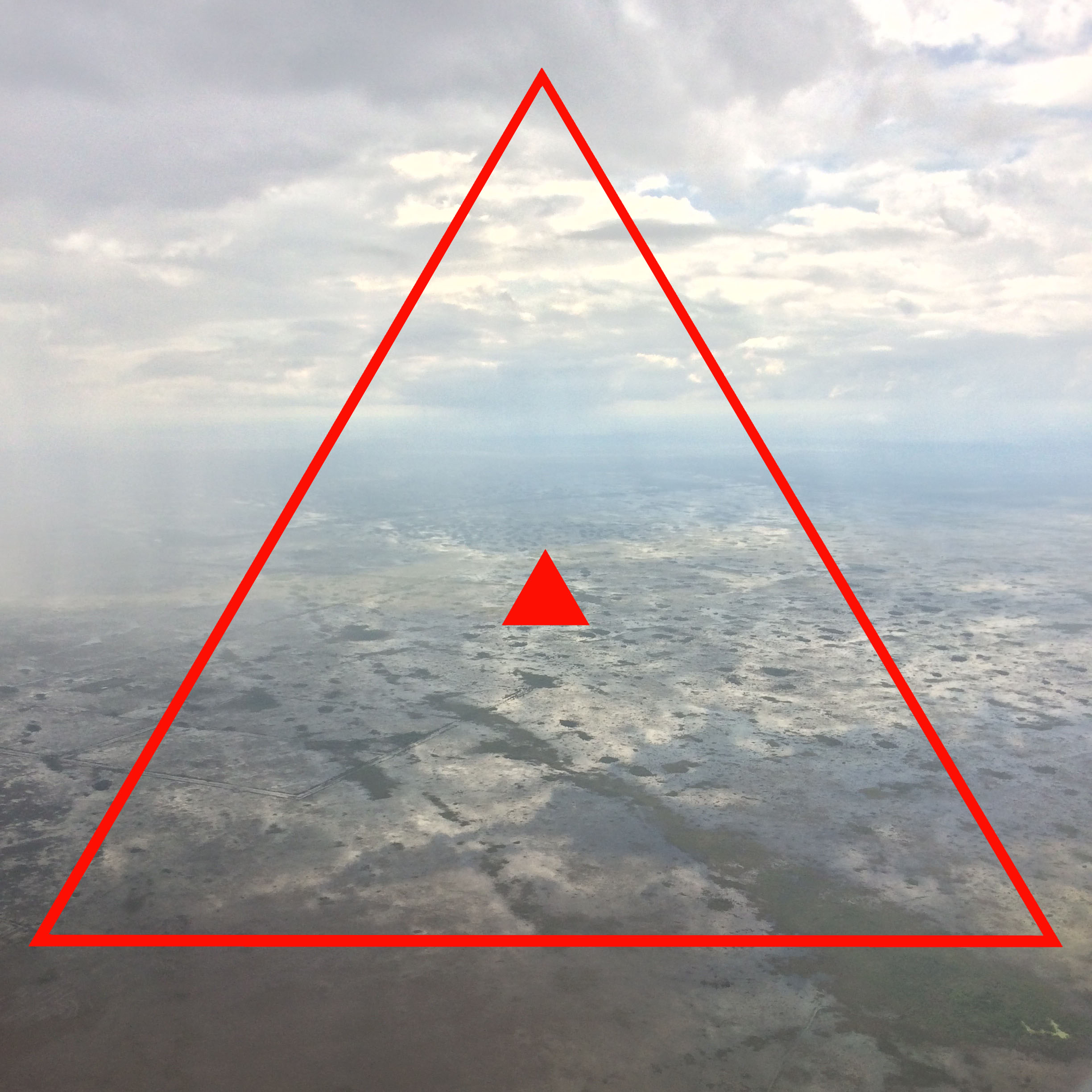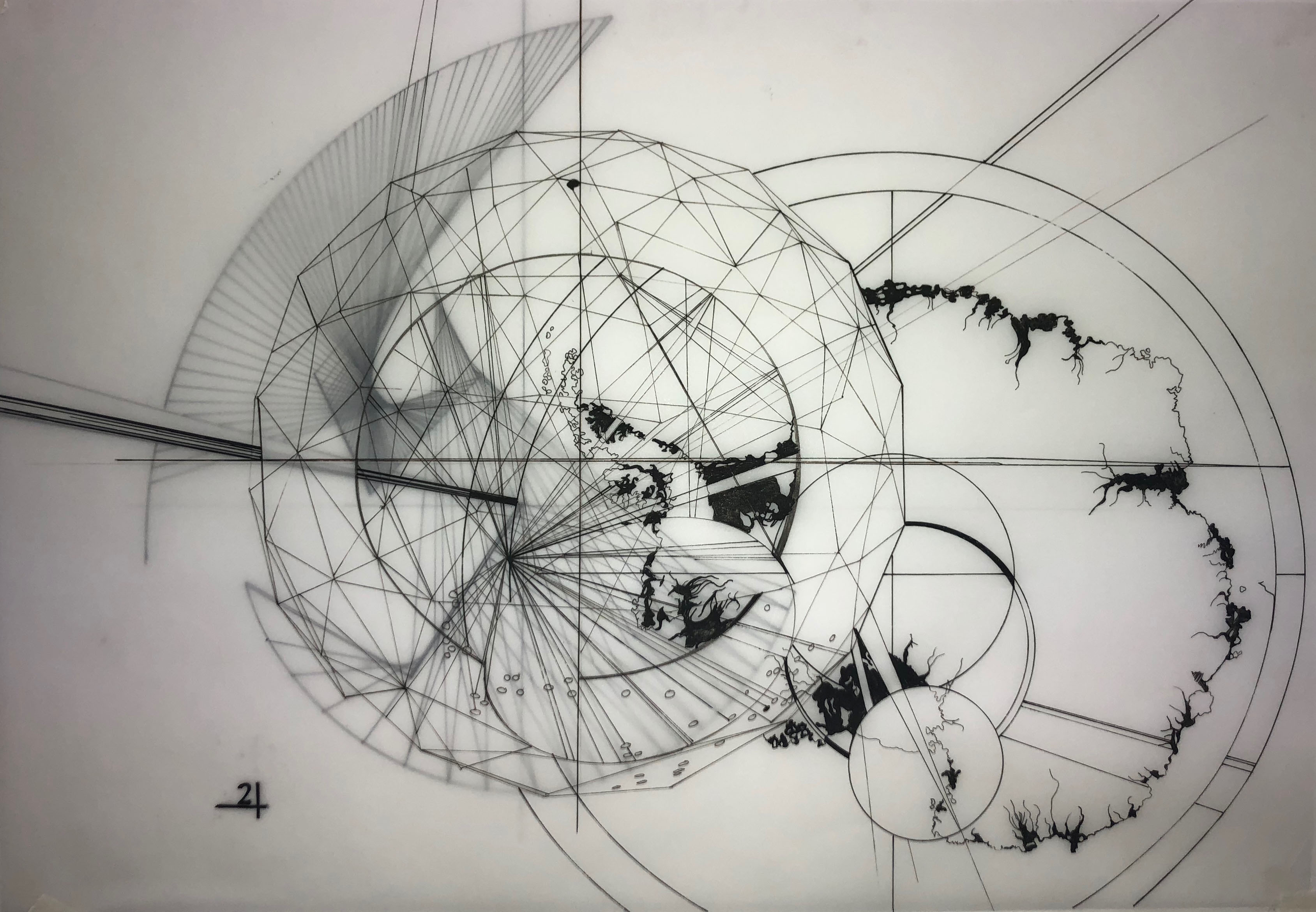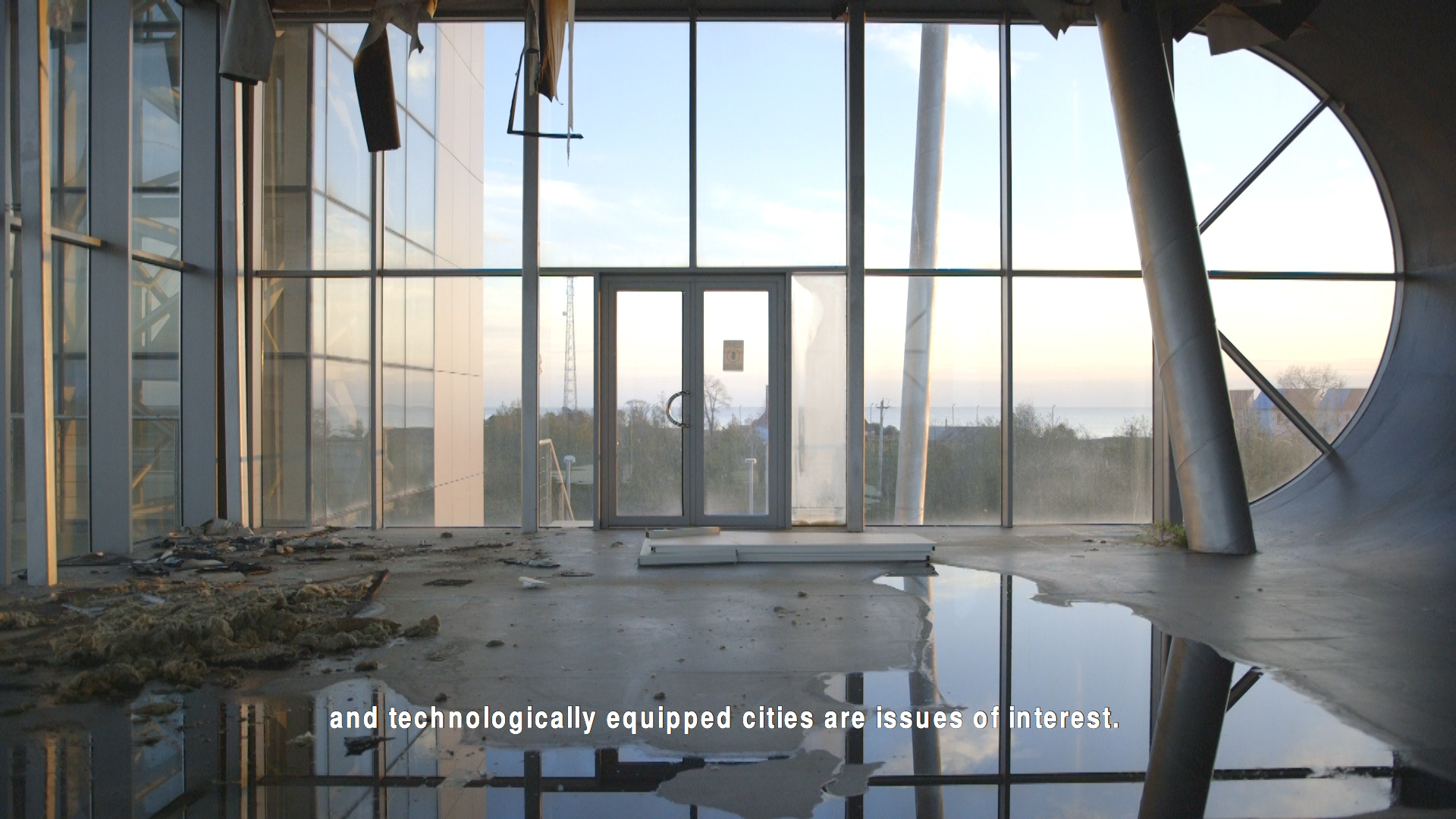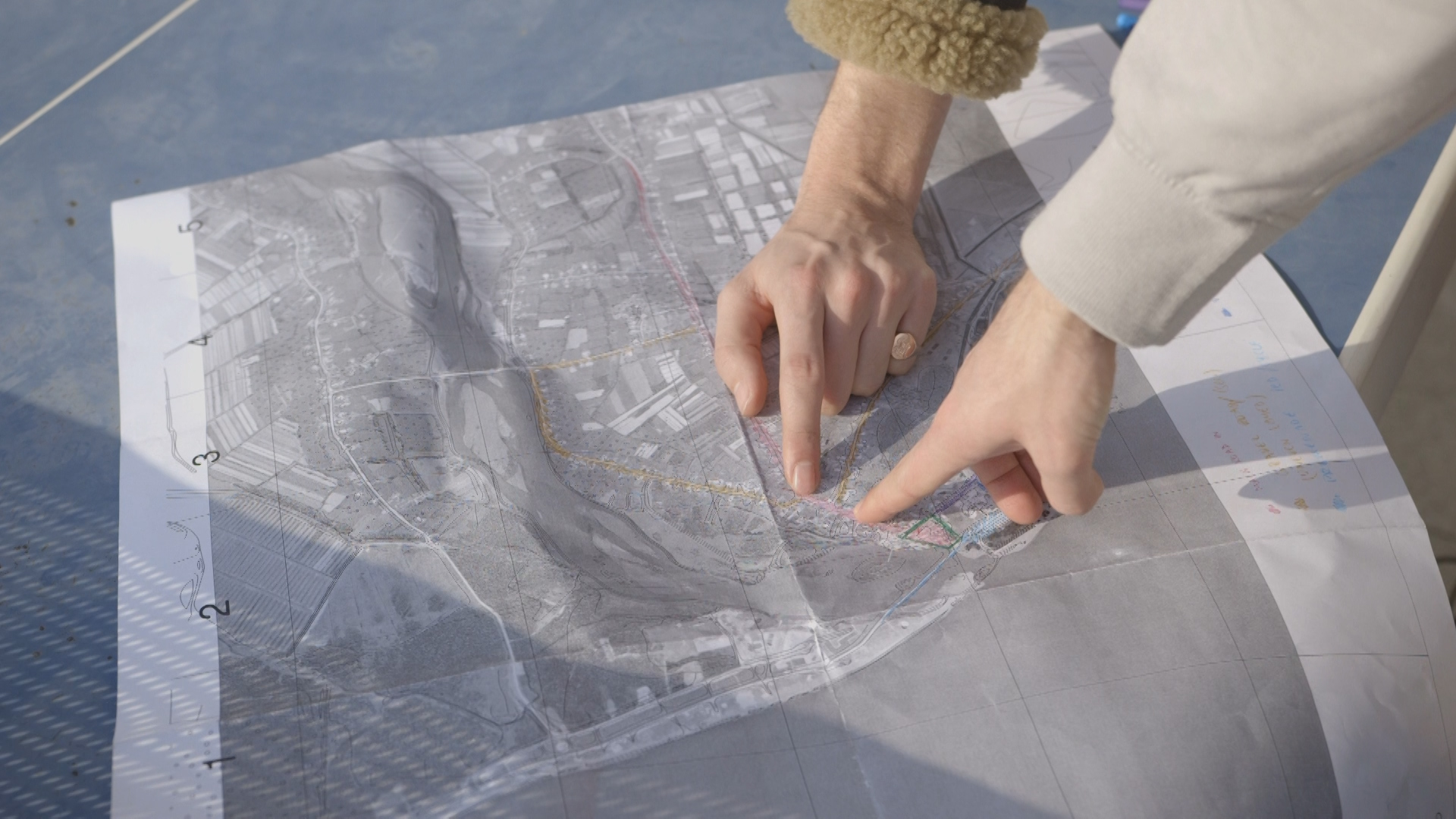Haig Aivazian is an artist living in Beirut. Working across a wide range of media, he delves into the ways in which ideologies embed, affect, and move people, objects, and architecture. Often departing from known events, and weaving in lesser known narratives, he has explored apparatuses of control and sovereignty at work in sports, finance, museums, and music.
Tekla Aslanishvili is an artist, essayist and curator based in Tbilisi and Berlin. After the completion of her Master of Arts at the Berlin University of the Arts in 2015, her work has been investigating proliferated practices of automated production and the algorithmic management of global urban spaces. Her artistic focus lies with the possibilities of unfolding the potential of computation, in favor of progressive social and political change. As part of her cross-disciplinary working method, she creates essayistic documentary films, interventionist performances, video installations, as well as texts and lectures.
Hicham Awad (b. 1988) is a Ph.D. candidate in Film and Visual Studies in the Department of Visual and Environmental Studies (VES) at Harvard University. His dissertation examines the roles played by “real-time” cinematographic, architectural, and computational technologies in the representation, communication, and management of risk in the domains of design, finance, and national security. He has delivered talks and presentations at several academic and art institutions such as Ashkal Alwan, Beirut Art Center, the University of Chicago, and the Society for the Social Studies of Science. His writings have been published by ArteEast Quarterly, 98editions, and the Sharjah Art Foundation.
Benjamin H. Bratton’s work spans Philosophy, Art, Design and Computer Science. He is Professor of Visual Arts and Director of the Center for Design and Geopolitics at the University of California, San Diego. He is Program Director of the Strelka Institute for Media, Architecture and Design in Moscow. He is also a Professor of Digital Design at The European Graduate School and Visiting Faculty at SCI_Arc (The Southern California Institute of Architecture).
Diann Bauer is an artist and writer based in London. She is part of the working group Laboria Cuboniks who wrote Xenofeminism: A Politics of Alienation and the collaborative A.S.T. (the Alliance of the Southern Triangle http://a-s-t.co/#Home). Bauer has screened and exhibited internationally at Tate Britain, the ICA and The Showroom, London, The Sharjah Biennale 13, UAE, Deste Foundation, Athens, The New Museum and Socrates Sculpture Park, New York, History Miami Museum and Art Center South Florida, Miami. She has taught and lectured widely at universities and cultural institutions including: Cornell University, Yale University and Cooper Union (US), HKW (Germany), DAI (Netherlands), Ashkal Alwan (Lebanon), Goldsmiths, The Baltic, The Tate and the ICA (UK).
Heather Davis (PhD, Concordia University) is a researcher, writer, and editor from Montréal. She is currently an assistant professor of Culture and Media at Eugene Lang College, the New School in New York. Her current book project traces the ethology of plastic and its links to petrocapitalism. Davis explores and participates in expanded art practices that bring together researchers, activists, and community members to enact social and environmental change. She is the editor of Art in the Anthropocene: Encounters Among Aesthetics, Politics, Environments and Epistemologies (London: Open Humanities Press, 2015) and Desire Change: Contemporary Feminist Art in Canada (MAWA and McGill-Queen’s UP, 2017).
Cheng Guo is a visual artist currently based in Shanghai. His practice explores the interrelation between individuals and mainstream/emerging technologies within a cultural and societal context. In 2012 he graduated from the Royal College of Art, London with a Master’s degree in Design Products. Cheng has worked as the Executive Director of Chronus Art Center in Shanghai, and as a visiting researcher at the Department of Environment & Health at the Vrije Universiteit Amsterdam. He has taken part in exhibitions, such as Machines Are Not Alone: A Machinic Trilogy (Chronus Art Center, Shanghai, 2018), The Ecstasy of Time (HE Xiangning Art Museum, Shenzhen, 2017), and GAMERZ 11 (Aix-en-Provence, France, 2015).
Geocinema consists of art historian Asia Bazdyrieva and filmmaker Solveig Suess. Bazdyrieva studied analytical chemistry at the Kyiv National University (2009) and art history at The City University of New York as a Fulbright grantee (2017). Suess completed her undergraduate in Visual Cultures at the Glasgow School of Art, with her postgraduate at the Centre for Research Architecture, Goldsmiths University, London (2017). Bazdyrieva and Suess started their collaboration at the New Normal think-tank, Strelka Institute, Moscow (2018).
Monika Halkort’s research focuses on the intersectional dynamics of racialization, commodification and enclosure inherent in digital infrastructures focusing on the specific context of political struggle and humanitarian governance. Her most recent work examines the material agency of data in (re)configuring dynamics of collective life-making as they stretch lived and embodied commitments and obligations across socio-technical registers and spatio-temporal domains. The main geographic focus of my work is the Arab world.
Helene Kazan's work engages an intersection of international law, architecture, and the physical experience of violence. Kazan questions the politics of dominant methods of producing evidence that can exclude or render the human body invisible and, in response, argues for the poetic testimony of violence, as a method by which the person can gain further political and legal agency. In 2019, Kazan complete a PhD at the Centre for Research Architecture, Goldsmiths, London. She recently curated the exhibition Points of Contact in Lebanon, and her work has been shown at documenta(14), The Serpentine Gallery, London, Beirut Art Center, Lebanon, Mosaic Rooms, London, Ibraaz, Strelka Institute for Media, Architecture and Design, Moscow, and the Haus der Kulturen der Welt, Berlin.
Jessika Khazrik (b. 1991) is an interdisciplinary artist and a writer. In her practice, she focuses on topics ranging from ecotoxicology and machine learning, to linguistics, photography, and the history of science. She explores the influence of the global economy, the techno-politics of voice, and the organisation of knowledge. Her work has been exhibited internationally at the Arab Image Foundation, Haus der Kulturen der Welt, Times Museum Guangzhou, and the Museum of Modern Art Warsaw. She holds a Bachelor’s degree in Linguistics and Theater from the Lebanese University, and a Master’s degree in Arts, Culture and Technology from MIT, where she was also awarded the Ada Lovelace prize.
Francois Knoetze is a performance artist, filmmaker and sculptor, currently based in Cape Town. He received his MFA from Michaelis School of Fine Art, Cape Town (2015). Knoetze’s practice explores the life cycles of discarded objects and the intersections of material and social histories. Using material waste as a medium, he creates elaborate sculptural suits that merge the human with the synthetic. His works have been presented at a wide range of national and international group exhibitions and festivals, including the Afropixel Festival & Dak’Art Biennale in Dakar (2018), LagosPhoto Festival, Nigeria (2015), and Syngenta Photo Awards Exhibition at Somerset House, London (2017).
Suhail Malik is Co-Director of the MFA Fine Art, Goldsmiths, London, where he holds a Readership in Critical Studies, and was 2012-15 Visiting Faculty at CCS Bard, New York. Recent and forthcoming publications include, as author, On the Necessity of Art’s Exit From Contemporary Art (2017) and ‘The Ontology of Finance’ in Collapse 8: Casino Real (2014), and, as co-editor, Realism Materialism Art (2015), Genealogies of Speculation (2016), The Time-Complex. Postcontemporary (2016), a Special Issue of the journal Finance and Society on ‘Art and Finance’ (2016), and The Flood of Rights (2017).
Fadi Mansour is an architect, artist and researcher based in Beirut. He graduated from the Centre for Research Architecture at Goldsmiths University of London in 2017 and the Architectural Association Diploma School in 2009. His research work, visual art practice and writing lies at the intersection of techno-capitalism, colonial violence and ecology.
Reza Negarestani is an Iranian philosopher best known for pioneering the genre of 'theory-fiction' with his book Cyclonopedia. He has contributed extensively to journals and anthologies and lectured at numerous international universities and institutes. He is the author of Intelligence and Spirit (Urbanomic/Sequence Press).
Bahar Noorizadeh is a filmmaker, writer, and platform designer. She works on the reformulation of hegemonic time narratives as they collapse in the face of speculation: philosophical, financial, legal, colonial, futural. Noorizadeh's current research examines the intersections of finance, Contemporary Art and emerging technology, building on the notion of “Weird Economies” to precipitate a cross-disciplinary approach to economic futurism and post-financialisation imaginaries. She is pursuing this work as a PhD candidate in Art Practice+Theory at Goldsmiths, University of London. Noorizadeh is a founding member of BLOCC (Building Leverage over Creative Capitalism).
Adham Selim is an architect and researcher whose work spans the aesthetics, politics and histories of tooling in architecture and design. His most recent research "Digital Arabs" pushes the archaeology of the digital into different time zones and extends it beyond the Western canon. He curated Objects of Change at the Sursock Museum (Beirut, 2017), and co-curated Command: Commandline at Station (Beirut, 2017). Selim is also a co-founder of The Archilogue, an online platform for crowd-translating and publishing.
Susan Schuppli is an artist and researcher based in London, whose work examines material evidence from war and conflict to environmental disasters. Her current work explores the ways in which toxic ecologies from nuclear accidents and oil spills to the dark snow of the arctic are producing an “extreme image” archive of material wrongs. Recent projects include Eavesdropping, Ian Potter Museum Melbourne, Nature Represents Itself & Slick Images, SculptureCenter, New York, Trace Evidence, a video trilogy commissioned by Arts Catalyst UK & Bildmuseet, Sweden and Atmospheric Feedback Loops, a Vertical Cinema commission for Sonic Acts, Amsterdam. She is Reader and Director of the Centre for Research Architecture, Goldsmiths where she is also an affiliate artist-researcher and Board Chair of Forensic Architecture.
Serkan Taycan (1978, Gaziantep, Turkey) is an artist/researcher and academic with an engineering and photojournalism background. He lives and works in Istanbul, Turkey. In his research-based artistic practice, he focuses on the dynamics of ecological and urban transformations caused by human activity. His work has been exhibited in various venues including Venice Architectural Biennial, Istanbul Biennial, Helsinki Photography Biennial, Mardin Biennial, Sinop Biennial and Thessaloniki Photography Biennale as well as SALT, MAXXI, MuCEM, Istanbul Museum of Modern Art, St. Petersburg Russian National Centre of Photography and Malmo Museum. Serkan Taycan completed his MFA degree in Visual Arts at Sabanci University, Istanbul and in Photography at Aalto University, Helsinki. He gave lectures, seminars, and led workshops at the Iceland Academy of the Arts (Reykjavik), Srishti Institute of Art, Design and Technology (Bangalore) and Leeds Arts University.





